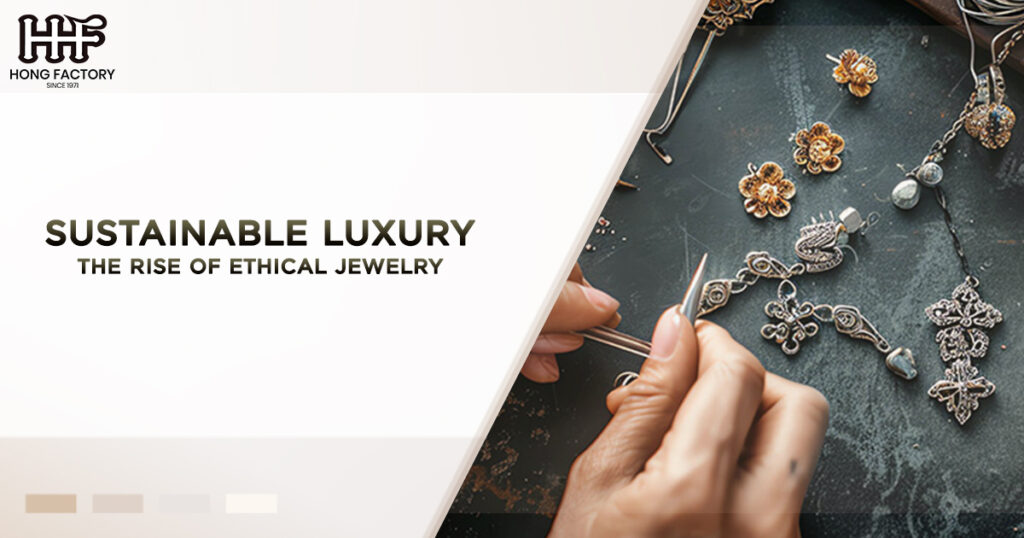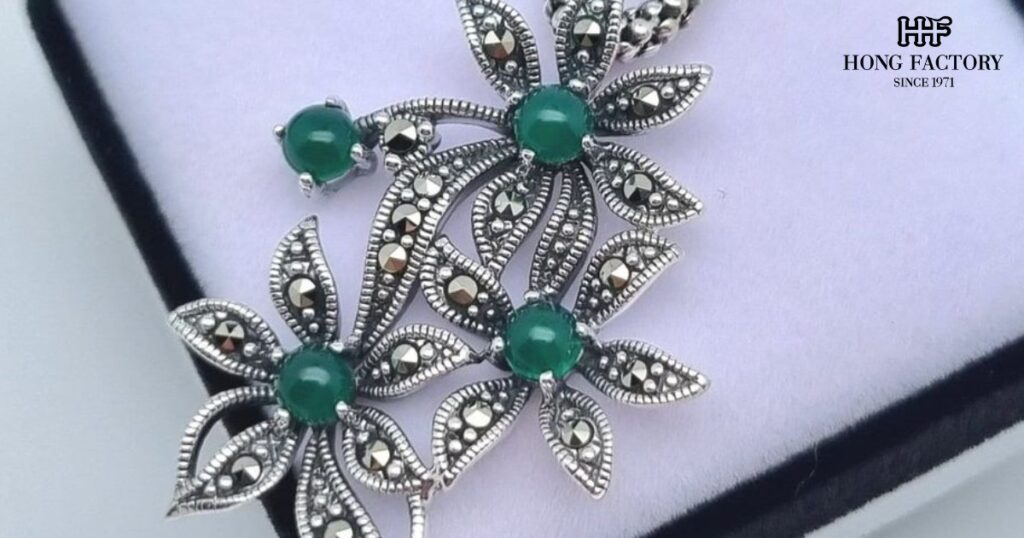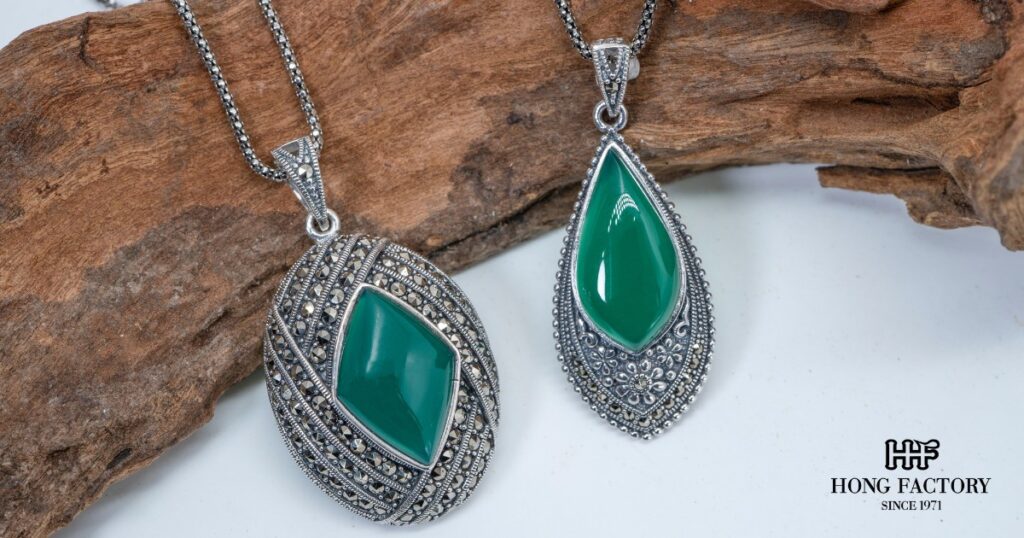
As global awareness of environmental and social responsibility grows, a new trend in the luxury market is gaining momentum ethical jewelry. For decades, the jewelry industry has been associated with controversy, from environmental destruction caused by mining to unethical labor practices. Today, consumers are demanding change.
They want jewelry that not only reflects beauty and craftsmanship but also aligns with their values of sustainability and fairness. This shift has given rise to ethical jewelry, a movement centered on sustainable materials and responsible sourcing. In this guide, we explore environmentally conscious jewelry choices and how you can make better decisions when shopping for luxury that doesn’t cost the planet—or exploit its people.
What is Ethical Jewelry?
Ethical jewelry refers to pieces that are designed and crafted with a focus on sustainability, transparency, and fairness. This means minimizing the environmental impact of jewelry production and ensuring that workers involved in the supply chain are treated ethically and fairly. At its core, ethical jewelry is about moving away from traditional practices that prioritize profit at the expense of people and the planet.
Key Elements of Ethical Jewelry
- Sustainable Materials : These are eco-friendly alternatives to traditional resources such as mined gold or natural diamonds. Examples include recycled metals, lab-grown diamonds, and upcycled gemstones.
- Responsible Sourcing : Ethical brands source raw materials from suppliers who follow strict environmental and labor regulations, avoiding conflict zones and exploitative work conditions.
- Transparent Supply Chains : Consumers are increasingly demanding to know where their jewelry comes from, including the environmental and social impact of its production.
Why Ethical Jewelry Matters
The jewelry industry has historically been associated with a range of ethical and environmental issues. Mining for gold, silver, and gemstones depletes natural resources, destroys ecosystems, and contributes to toxic waste. For example, gold mining produces around 20 tons of toxic waste per ounce of gold. Moreover, diamond mining has often been linked to “blood diamonds,” which fund conflict and violence in certain regions.
By choosing responsibly sourced and sustainable alternatives, consumers can help combat these issues. Supporting ethical jewelry brands not only reduces your ecological footprint but also promotes fair wages, safe working conditions, and positive change in vulnerable communities around the globe.
A Guide to Environmentally Conscious Jewelry Choices
Choosing ethical jewelry doesn’t have to be overwhelming. By focusing on specific criteria like material origin, brand values, and certifications, you can make informed purchases. Let’s explore the main factors to consider
1. Prioritize Sustainable Materials
Ethical jewelry begins with the right materials. Sustainable options reduce harm to the planet while maintaining the quality and elegance of traditional luxury jewelry. Common examples include
- Recycled Metals: Recycled gold, silver, and platinum are repurposed from existing jewelry, electronics, and industrial materials. This eliminates the need for new mining and significantly reduces waste.
- Lab-Grown Diamonds: These diamonds are created in laboratories using cutting-edge technology, delivering the same brilliance and durability as mined diamonds without the environmental or ethical concerns.
- Alternative Gemstones: Reclaimed or vintage gemstones offer a sustainable way to enjoy precious stones without the impact of mining.
- Wood, Bamboo, and Biodegradable Elements: For artisanal and minimalist designs, materials like responsibly harvested wood and bamboo are eco-friendly alternatives.
2. Look for Responsible Sourcing
When buying jewelry made from mined materials, seek brands that practice responsible sourcing. This means ensuring that workers are paid fairly, operate in safe conditions, and that materials are extracted without harming local ecosystems. Certifications to look out for include
- Fairtrade Gold : A certification ensuring that gold is mined under strict ethical and environmental standards.
- Kimberley Process : A global initiative aimed at preventing the trade of conflict diamonds. While not flawless, it’s a step toward ethical sourcing.
- RJC (Responsible Jewellery Council) : A certification guaranteeing that a brand adheres to responsible business practices throughout its supply chain.
3. Choose Transparent Brands
Transparency is critical in the ethical jewelry movement. Look for brands that share detailed information about their business practices, from the origins of their materials to the conditions in which their pieces are crafted. Many ethical jewelers provide traceability reports or allow consumers to track their jewelry’s journey from mine to market.
4. Support Upcycled and Vintage Jewelry
Upcycled or secondhand jewelry is inherently sustainable as it repurposes existing materials. Vintage jewelry, for instance, has a timeless charm and contributes to circular fashion by keeping precious materials in use. By purchasing pre-loved or upcycled pieces, you actively reduce demand for new mining.
5. Invest in Quality Over Quantity
Ethical jewelry is often more expensive than mass-market alternatives, but it’s an investment worth making. Instead of buying cheap, fast-fashion accessories, focus on quality pieces that are built to last. This ensures you’re contributing to a more sustainable industry while acquiring an item of enduring value.
6. Research Before You Buy
Take time to research the brands and their commitment to sustainability. Here are a few questions to consider
- Does the brand source materials ethically?
- Are their workers treated fairly?
- Do they use sustainable packaging?
- Are they certified by credible organizations?
Leading Ethical Jewelry Brands
Numerous brands are leading the charge in ethical jewelry, combining luxury design with sustainable practices. Some examples to explore include
- Brilliant Earth : Known for its selection of responsibly sourced diamonds and recycled metals, this brand is a pioneer in ethical jewelry.
- Catbird : This New York-based company uses recycled gold and conflict-free stones in its delicate, handmade designs.
- Pippa Small : A Fairtrade-certified brand that actively empowers local communities and artisans.
- Anna Loucah : Famed for her use of Fairtrade gold and commitment to creating jewelry with minimal environmental impact.
The Benefits of Supporting Ethical Jewelry
By embracing ethical jewelry, you’re making a positive impact in several key areas
- Environmental Protection : Sustainable materials and responsible sourcing reduce mining’s devastating effects, from deforestation to water pollution.
- Social Justice : Ethical brands often work directly with communities in developing countries, providing fair wages and supporting local economies.
- Aesthetic and Emotional Value : Knowing that your jewelry is aligned with your values adds a deeper emotional connection to each piece.
Conclusion
The rise of ethical jewelry marks an exciting turning point in the luxury market. By choosing pieces crafted with sustainable materials and responsible sourcing, consumers can enjoy beautiful, high-quality jewelry that reflects their commitment to a better world. As more people support transparency and sustainability, the industry has no choice but to move toward more responsible practices.
When you invest in ethical jewelry, you’re not just buying adornments—you’re contributing to a movement that redefines what luxury truly means. Let your jewelry tell a story of compassion, sustainability, and timeless elegance.
By following this guide to environmentally conscious jewelry choices, you can embrace sustainable luxury without compromising on style or values. Let every piece you wear be a symbol of beauty for both you and the world around you.


